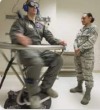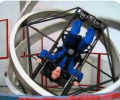Usnavy2019
10-Year Member
- Joined
- Mar 31, 2013
- Messages
- 878
They do a spouse's award (certificate of appreciation) for each spouse, but no other family members. The mini wings would have been cool to get though! It is very cool seeing the fraternity of winged aviators. Texting a lot of my flight school mentors, more than one said "welcome to the club" and it actually feels like one haha. I hope there are similar feelings in other designators too. Every community has its heroes and great achievements.Oh well done, your head looks just like I imagined it! Big brain in there somewhere.
Do they still do the mini-wings to give to mom or G/B/Friend/Spouse? My departed mother-in-law gave me the wings she had kept for decades. Hers had a tiny diamond chip.
So proud of you and appreciate you sharing this; wings of gold are so special. DH has the tiniest wings of gold sticker you can find on the center back window of the Corvette, no big honking USNA crests or N* or go Navy bumper stickers or Navy class year vanity plate. Just the tiny wings of gold. If people know what they are, great. If you know, you know.
Your notes here are excellent. Deckplate gouge.
Happy to help! I feel the inner workings of flight school are valuable for everyone interested in Naval Aviation (and their families) to learn.


